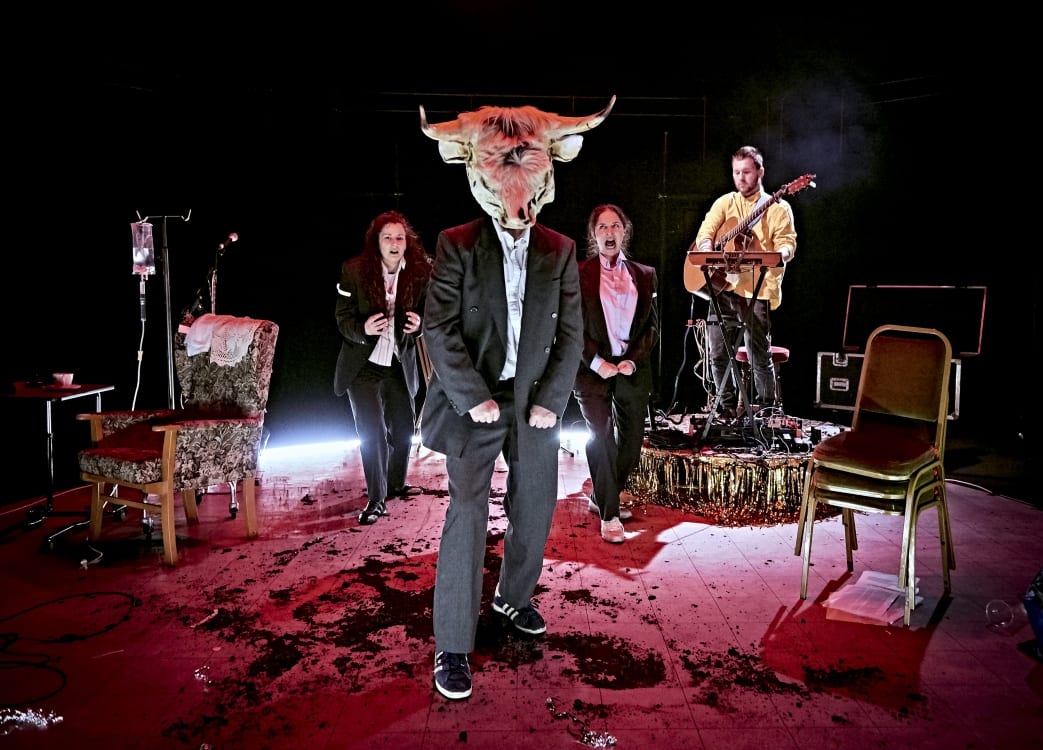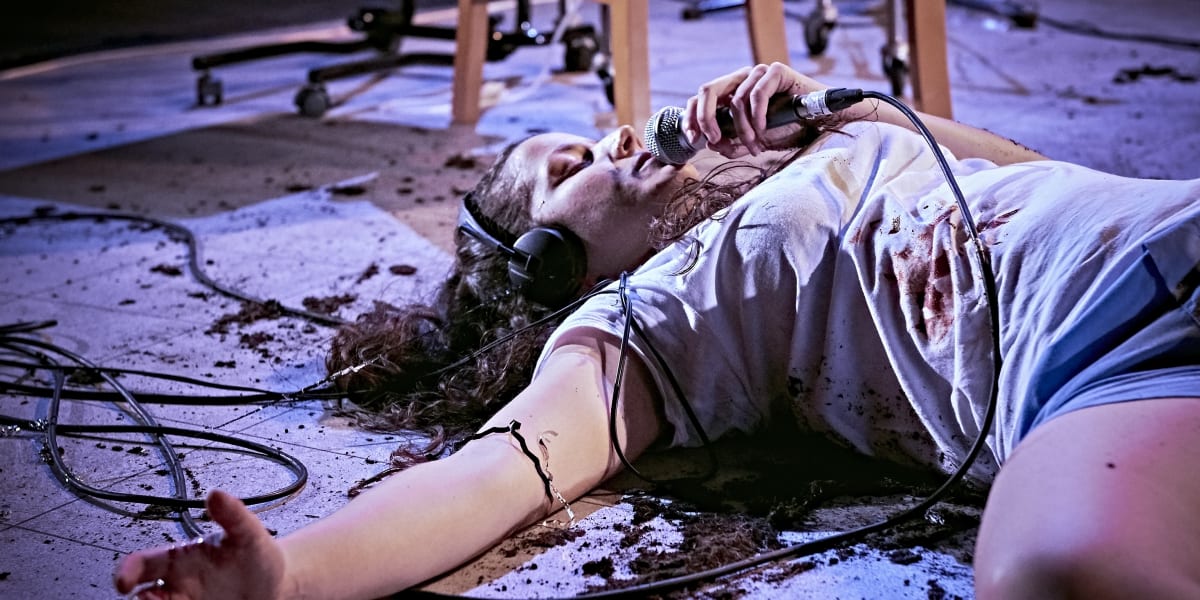Shooting Rabbits is not a particularly plot-driven play, yet I feel hard put to give you, reader, a very clear idea of its content without spoiling some of the experience. Clearly the company thought so too, given just how little the play’s prospectus reveals about the production itself, and I feel I must write this review with a finger to my lips.
What Shooting Rabbits is, undeniably, is ambitious. The play charts the rise and fall of democratic hopes and other utopias in the last hundred years. It spans the entire twentieth century, going back and forth from the fraught era of the 1930s and the Spanish Civil War to our own baffling times. Its unnamed protagonist travels from the coal mines of Wales all the ways to the Asturias. Along the trip, five languages, no less, are spoken on stage: Welsh, English, Castellan, Basque and even, for a short time, Italian. The production is as challenging to the performers as it is to the audience. The actors swap roles or they all play the same character at once. Sometimes one of them enacts an entire conversation on their own. A guitarist accompanies the transitions from one place and era to the next.
The play gives voice to the experience of Welsh coal miners embarked on a perilous journey to join the International Brigades that fought on the Republican side in Spain, only to lose to Franco’s armies, and juxtaposes this episode with the present day. In the process, the production questions Wales’ participation in international politics, and seems to invite the nation to make of its geographical marginality and cultural uniqueness a strength. The play’s exploration of Welsh identity and consciousness avoids the trap of navel-gazing, and the script is quick at pointing to the tendency to self-righteousness when sticking only to your own cultural guns. At the same time, the multilingual set-up of the play conveys the difficulties of translation and communication across languages with a real acuteness, and plays on the frontier between understanding and misunderstanding by leaving some moments in Welsh or Spanish only.
The production also hints at broader questions about the role and efficacy of political engagement: occasionally, the play reminds us, voices speaking all together lead only to chaos. What makes the story of Welsh participants in the Spanish Civil War so fascinating is not just how little it is known, but also its capacity to mirror present-day disappointments. Yes, there was a time in history when, undeniably, the ‘good’ guys lost, and got their hands dirty in the process. The actors explore this trauma with their speech and bodies. There are many moments in the play when the performance’s pace changes to slow motion, leaving us to contemplate the actors’ contorted faces and gestures. Those contemplative breaks have the drawback of detaching us from the play’s emotional crux, rather than pulling us in. The play’s fragmented format leads to bold and impressive moments, but the viewer is often asked to think, rather than feel. The constant demands the play puts on its audience to think about what they’re watching are its weakness and its strength. Shooting Rabbits’ innovative narrative format and its thoughtful investigation of the death of political dreams in the first half of the century make it an original and engaging production.

